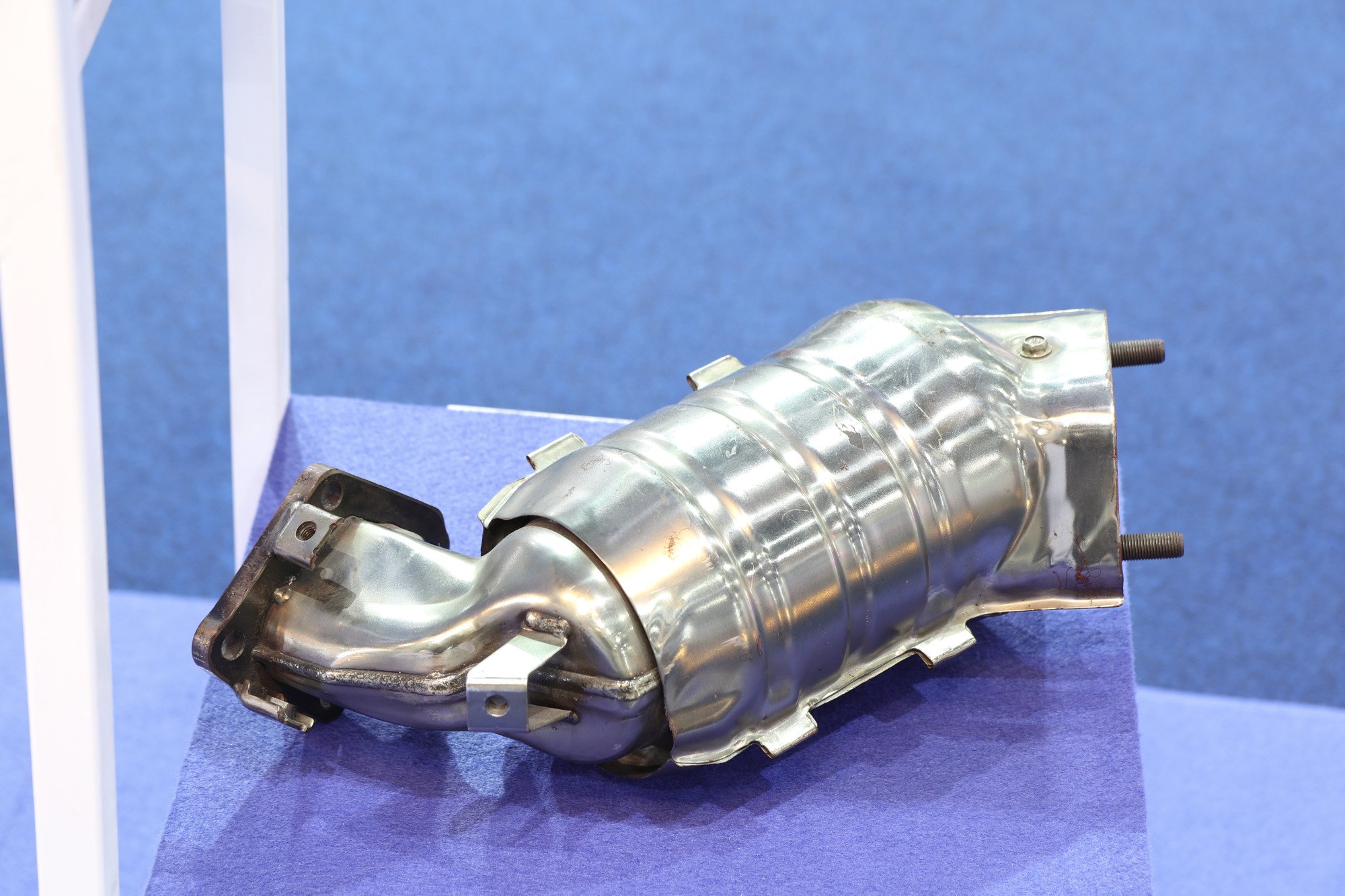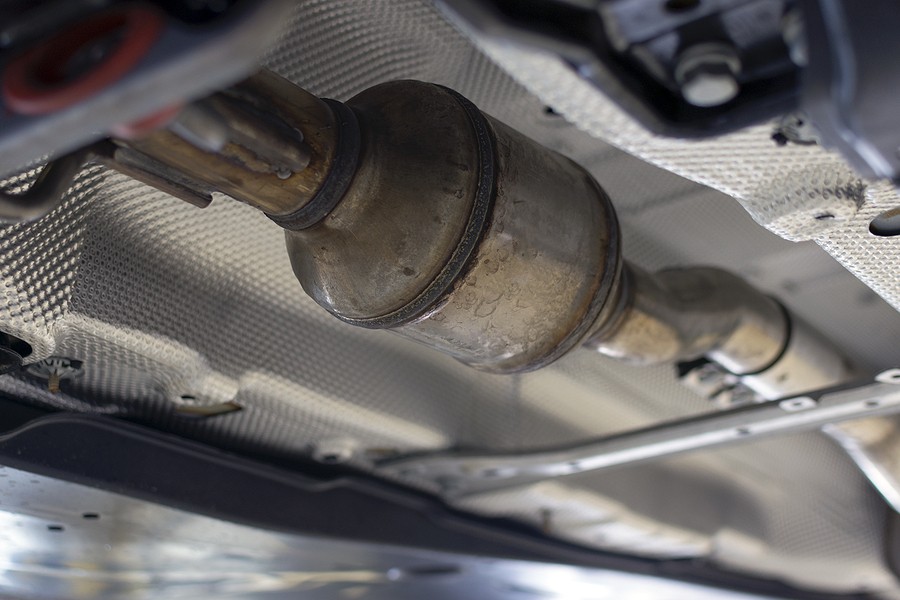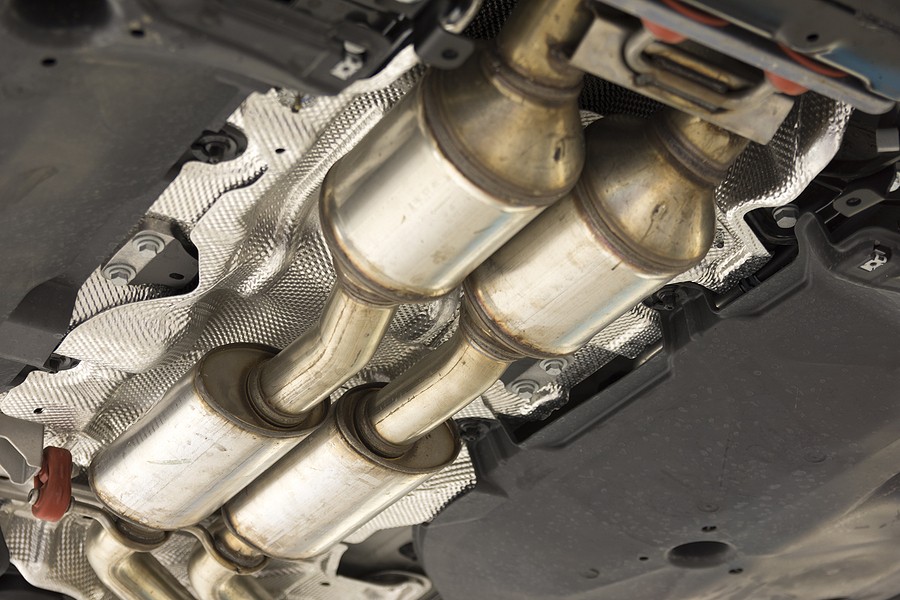The catalytic converter is responsible for converting harmful molecules from combustion into less harmful gases to protect air quality.
The catalytic converter is one of the most critical components in your vehicle. It is important because when it fails, it costs you a lot of money to get fixed, and that's why you have to maintain it all the time and understand how it works.
By understanding what a catalytic converter does, you get an idea about why it's critical to maintain this converter and ensure it doesn't fail. You also will know what could cause this catalytic converter to fail, so you can't avoid it.
This article provides detailed guidance to help you answer the question, what does a catalytic converter do? It walks you through its main functionality, highlights the main problems you might encounter in this converter, and provides you with some tips and tricks on solutions and repairs.
What does a catalytic converter do in your car?
The catalytic converter is a special component added to vehicles starting early 1960s. The whole idea of adding this converter is to protect the environment and ensure that no harmful gases leave vehicles and impact air quality.
The way converter works through what's known as the chamber catalyst. This specific design for the converter allows it to break down harmful gases into less harmful molecules. Hence, they're ready to leave the vehicle and get exposed to the atmosphere without harming it.
Typically, the kettle tick converter is located somewhere underneath the vehicle. You'll see that it's unique in shape because it looks like a metal box with two different pipes: one inlet and the other an outlet. As you might expect, the inlet brings in the raw gases from the combustion process, and the outlets release the ready-to-go gases to the atmosphere after treating them and ensuring that they're not going to cause significant harm to the atmosphere.
What are the different types of catalytic converters in vehicles?
Catalytic converters are not going to be the same. You might see certain types and designs in some vehicles that are not the same in other vehicles. Typically, you'll come across two catalytic converters: two-way and three-way converters.
Let's take a closer look at each type and get a sense of why they're called this way:
1. Two-way catalytic converters
The first type of catalytic converter is two-way. This converter was changed because it only does one job: providing an oxidation catalyst. It treats carbon monoxide and converts it into carbon dioxide, so it's less harmful to the atmosphere. You'll find two-way catalytic converters in any vehicle before 1981.
2. Three-way catalytic converters
Since the environmental advocates thought that the two-way catalytic converters were not enough to treat the gases or at least get them ready to leave the vehicle to the atmosphere, they decided to add more and request additional treatment for these harmful gases. That's why automotive experts and companies came up with the three-way catalytic converter, which is responsible for performing the oxidation and adds up by treating the nitrogen oxide and converting it into less harmful gas.

Why is catalytic converter getting popular these days?
If you follow some automobile articles and newsletters, you'll see a big trend in people stealing catalytic converters. It might be strange that these converters are the only attracting component among other different expensive components in your vehicles.
This is not surprising because there are many reasons why people are targeting cause those converters more than others:
1. Expensive metals
The first and most critical reason people attract catalytic converters and start stealing them is that they include some very expensive metals. These metals are rare, and by just selling these metals as scrap, people can make a decent amount of money.
That's why thieves started thinking that instead of stealing a whole vehicle or risking their lives, they could take out the catalytic converter and sell it separately to make good money.
2. Easy to access
Another important factor that made thieves attract catalytic converters is their easy access. Think about it; the catalytic converter is located underneath the vehicle, and it's hard for the car security system to detect any movement underneath the car probably. Therefore, it's unlikely that many vehicles will trigger any security warnings or even let the owner know.
3. Easy to remove
The other thing is that the most expensive components in your vehicle might take some hassle and certain mechanical skill sets to be taken out. However, when it comes to the catalytic converter, thieves can easily cut it and take it out without having any skills or needing any time.
If you've seen the YouTube videos and the news, you'll notice that it doesn't take more than a couple of minutes for these thieves to steal the catalytic converter, which is enough time for them to remove it and run away without the owner paying attention.
The other thing is that thieves choose the perfect time for getting rid of these components when the owner might be busy or when everybody is sleeping at night.
4. Interested buyers
Finally, thieves target the cut-out converter because many people are willing to purchase them. Unfortunately, many online websites allow people to post their scrap parts without getting confirmation about whether this part was stolen.
The good thing is that many states are now issuing certain actions to prevent this catalytic converter theft from expanding by monitoring who's selling them and tracking where these components are getting stolen.
Remember that this doesn't mean thieves will give up because they have their ways, and there are many chances for them to steal your catalytic converter. Don't be surprised if you see someone cutting out your catalytic converter from your car.

How to prevent catalytic converter theft?
Since it's still a common trend for people to steal catalytic converters, automotive experts provide recommendations on what needs to be done to avoid dealing with this situation and to discourage thieves from targeting your converter. Let's take a closer look at some of the recommendations below:
1. Choose your parking area
If you don't want to invest much money trying to protect the converter, the easiest thing to do is to avoid the situation from happening. In other words, the easiest thing to start with is by choosing your parking area.
For example, if you have a closed garage, it's better that you start moving forward with parking your vehicle inside. This allows you to protect your car from weather conditions, but also it prevents thieves from getting inside the garage and trying to steal the converter.
It's much easier for thieves to steal the converter when the vehicle is parked outside than going inside the garage and risking their lives. Many things could go wrong if they got inside their property, but it's not risky for them to steal a converter from a vehicle parked near a tree or outside.
2. Consider an alarming system
Many people don’t have the luxury of parking their vehicles inside, and that's where you have to be more creative. Some new companies created alarming systems that allow your vehicle to make some sound or alert you that someone is trying to steal the converter.
Remember that these systems might take the time or need to be more effective. In other words, as we indicated before, stealing the converter takes up to a couple of minutes, and by the time you get out of the house, the thieves might be gone.
The other thing to keep in mind is that you want to avoid facing these thieves because they might be armed, or you might get yourself into some risky situations that are more expensive to deal with than losing the catalytic converter.
However, some experts still see the value of installing alarming systems because they at least might discourage the thieves from continuing to cut the converter. In other words, if the thieves started cutting the converter and realized an alarming system was going off, they could run away before continuing the job.
3. Check the tracking systems
A safer alternative would be to put a tracking system on your converter. Many people put tracking systems to maintain their cars and at least know where they're going before the thieves do something with them.
This is not a 100% guarantee that your vehicle will be protected and that the thief will not cut the converter when the police come to their vehicle. But at least it's something to discourage them from touching your vehicle or taking it.
4. Make it hard to sell the part
There are some ways where you can't connect the vehicle’s catalytic converter to the VIN. This way, thieves will find it challenging to sell this catalytic converter. However, this is not a prevention method because by the time they try and test this method, your converter will be gone, and they're not going to come back and put it back in your vehicle.
However, it might help you or make these people give up on stealing catalytic converters.
5. Connect the converter to your frame
Finally, there are some physical actions where you can connect the catalytic converter to the frame. As we mentioned, one factor that encourages thieves to target catalytic converters is that it's easy to cut out.
Connecting the conversion to your frame adds another layer of complexity for people to steal the converter. Therefore, it might be a strong prevention action that prevents people from stealing your converter because it will take time.
6. Consider catalytic converter theft when shopping for a new vehicle
The other thing to remember is that thieves target certain vehicles more than others. In other words, if you're planning to shop or a new vehicle, consider researching and learning more about vehicles most likely to get catalytic converter theft.
Many researchers put together a list of vehicles that are unlikely to get their catalytic converter stolen. So, if your catalytic converter is a concern, consider it one of the important factors when shopping for your new vehicle so you can avoid dealing with this situation shortly.

Is it worth fixing a failing catalytic converter?
If you still need to get your catalytic converter stolen, there are other situations where you might need to check whether it's worth fixing a converter. The converter is not designed to last forever; at some point, you need to replace it when it reaches the end of its lifetime.
Whether you fix the catalytic converter or install a new one depends heavily on your vehicle’s type and condition and the expected budget. For example, if you own an expensive car that's still in good shape, and slow converter might be worth it. However, suppose your car is failing and has some other troubles related to the engine or other significant components. In that case, you should consider selling it rather than wasting your time and effort.
Many companies will purchase your car even if it has a failing converter. This is because finding a potential private buyer might be almost impossible, especially if something is damaged with a converter. If you want more details about these companies, call Cash Cars Buyer at 7737914363.

What does a catalytic converter do? Final thoughts
As you might notice, the kettle converter is an important element in your vehicle that you must maintain and keep in good shape all the time. When the kettle converter fails, it results in a lot of problems, including preventing your vehicle from passing the emission test.
There has been a common trend of people stealing catalytic converters, and that's why automotive experts recommend keeping an eye on and adding all potential precautions to prevent thieves from taking your vehicle’s converter.
Once your converter fails or someone steals it, you must evaluate the situation carefully before you invest a significant amount of money in replacing or installing a new one.



